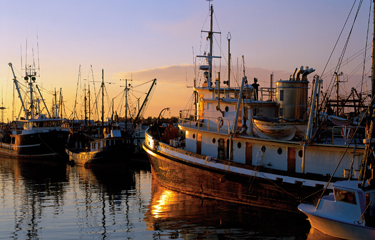Fisheries and aquaculture sectors globally have been hit hard by the ongoing COVID-19 pandemic and could face further disruption in this year as lockdowns affect supply and demand, according to a report by the Food and Agriculture Organization of the United Nations (FAO).
The information paper, “The impact of COVID-19 on fisheries and aquaculture food systems” – which was featured at the 34th session of the FAO’s Committee on Fisheries (COFI) earlier this month – reports fish supply, consumption, and trade revenues are all expected to have declined in 2020 due to containment restrictions, while global aquaculture production is expected to fall by some 1.3 percent; the first drop recorded by the sector in several years.
"The pandemic has caused widespread upheaval in fisheries and aquaculture as production has been disrupted, supply chains have been interrupted and consumer spending restricted by various lockdowns," FAO Deputy Director-General Maria Helena Semedo said. "Containment measures have provoked far-reaching changes, many of which are likely to persist in the long term."
The FAO stressed that while food itself is not responsible for the transmission of COVID-19 to people, every stage of the fisheries and aquaculture supply chain is susceptible to being disrupted or stopped by containment restrictions. Uncertainty will continue to dominate the outlook for the fisheries and aquaculture sectors moving forward, particularly with regard to the duration and severity of the pandemic, the report found.
Aggregate prices for 2020, as measured by the Fish Price Index, are down year-on-year for most traded species. Restaurant and hotel closures in many countries have also led to a fall in demand for fresh fish products.
"The impact has been significant in developing countries, especially those with large informal sectors, where small-scale and artisanal workers and communities depend on fisheries for their food security and livelihoods. They have borne the brunt of restrictions," Semedo said.
There is growing evidence that unsold production from commercial aquaculture entities will result in increasing levels of live fish stocks, creating higher costs for feeding as well as greater number of fish mortalities, the report found. Sectors with longer production cycles, such as salmon, cannot adjust rapidly to the demand shifts.
Global catches from wild-capture fisheries are also expected to have declined slightly in 2020, as, overall, there has been a reduced fishing effort due to COVID‑19-related restrictions on fishing vessel crews and poor market conditions.
As a result of COVID-19, consumer preferences have shifted. While demand for fresh fish has waned, consumer demand for packaged and frozen products has grown as households look to stock up on non-perishable food.
Before the pandemic, the sector was on a general upward trend. In 2018, global fisheries and aquaculture production (excluding aquatic plants) reached an all‑time record of nearly 179 million metric tons (MT). Overall capture fisheries, with 96.4 million MT, represented 54 percent of the total, while aquaculture, with 82.1 million MT, accounted for 46 percent. And over the last decade, fish consumption has grown significantly to an average of over 20 kilograms per capita.
The FAO wants to see disruptive border restriction measures on trade in food to be minimized for food security. Its report calls for sectoral and regional organizations to work together in order to manage fisheries and aquaculture during the pandemic, with measures that support job protection and ensure a fast recovery of the sector without compromising sustainability. The impact of COVID-19 on women, already vulnerable as food producers, processors, vendors, and carers, should also be considered with government support provided for women along the fish value chain, it said.
Uncertainty continues to dominate the outlook for the fisheries and aquaculture sectors, particularly in regard to the duration and severity of the pandemic.
According to the FAO’s preliminary figures, the trade of fish and fish products grew to reach a record USD 163 billion (EUR 135.9 billion) in 2018. Developing countries had a share of 54 percent of these exports by value and 59 percent by volume. China was the main fish producer, the main exporter of fish and fishery products, and the third largest importer. Norway was the second major exporter, followed by Vietnam, India, the United States, and Thailand.
The FAO calculated that about 59.7 million people were employed in the primary sector of capture fisheries and aquaculture in 2017, while about 200 million people were directly and indirectly employed along the value chain, from harvesting to distribution.
Photo courtesy of Josef Hanus/Shutterstock







